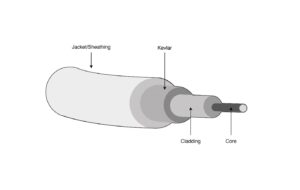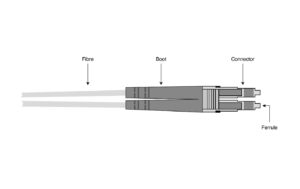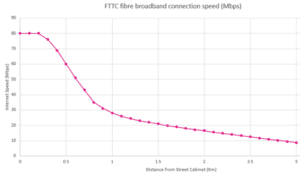Reading Time:
Posted on: November 28, 2022
Full fibre broadband is everything we’ve shouted about before and more. Ultrafast, super-reliable and ultimately the next step in digital infrastructure.
But what is fibre broadband?
A fibre broadband network is made up of fibre optic cables. These fibre optic cables are what is going into the ground when you see roadworks taking place in your area, and what provides your home with internet.
The main difference between fibre optic cables and copper cables is how they use light to transmit data.
Where copper would use electrical signals that get weaker the further they travel, fibre optic cables use light signals that can travel much further, much quicker, and ensure matching speeds for everyone connected, no matter the distance between home and cabinet.
But how can light transmit data?
Well, digital devices deliver information in binary codes 1s and 0s. These are called bits.
When data is requested, these bits are transferred one at a time along with a physical transmission. In the case of copper cables, an electric charge carries the information from one end of the cable to the other.
When an electric charge is present, a 1 is transmitted; when an electric charge is not present, a 0 is transmitted.
When you turn the current on and off rapidly (millions of times a second), the 1s and 0s (bits) travel along the cable.
With fibre optic cables, the same process happens in terms of 1s and 0s. But instead of using electric charges, they use light.
There is an LED light at one end of the cable and when light is present, a 1 is recorded, and when light is absent, a 0 is recorded.
Because the sheer speed of light is so fast, the data can be transmitted a lot quicker along the cables, from the servers to your devices.
Well, a fibre optic cable has many components to it: the core, the cladding, the Kevlar, the jacket/sheathing, the boot of the cable, the connector, and the ferrule.

The core is a strand of extraordinarily thin glass that is about the same size as a strand of hair. It is placed at the centre of the cable and is where the light pulses are transmitted through the cable.
Surrounding the core is a layer of cladding. This encapsulates the core and helps the light pulses reflect into the core and aid data transmission.
The cladding and the core together are what are generally considered to be fibre cables.
The Kevlar’s purpose is to protect the cable from damage when it is being blown through the ducts (blowing cable means threading it through the ducts underground).
It is heat resistant, lightweight, synthetic, and delivers an extreme amount of super-strength to protect the fibre optic core and cladding.
The outside, rubber sealing of the cable is known as the jacket/sheathing.
It is usually made from PVC (a type of rubber-like plastic) or what is called a ‘riser’. Alternatively, it could be made of plenum.

The boot of the cable’s role is to bridge the fibre cables to the connector. Due to the flexibility of the fibre optic cable, the boot will stabilise these cables allowing for greater rates of data transmission.
The connector is the piece at the end of the entire cable that plugs into the equipment. A tab is the most common locking mechanism on the cable, and when it comes to installing or removing cables, the connector is what you plug in and pull out of the equipment.
The ferrule contains the end of the fibre and is used to help with alignment with other fibre cables as well as to ensure the cable is lined up with transceivers.
It is often made from ceramics, plastics or stainless steel.
When it comes to ensuring the cable operates correctly, we must complete some testing to ensure that the light can travel through the entire length of the network.
Copper networks (FTTC) lose a lot of power throughout the line. The further the data travels, the slower the speeds get.

As the light source travels along the fibre cable, its power level decreases. Also known as ‘optical loss’, which is measured in Decibels (dB).
The most accurate way to test for optical loss is by using an OLTS (Optical Loss Test Set) and inputting a known level of light into one end of the cable.
By measuring the light level at the other end of the cable, we can then see how much optical loss has occurred.
This helps tell us if the optical loss is significant, if there are any potential breaks within the cable, or if any maintenance is required to help improve the amount of light retained in the cable.
This testing must be completed for each cable to ensure that every connection has the capability of transmitting data into your home.
We have a separate page dedicated to our broadband installation process that outlines in detail about how we can connect your home to our network.
The answer is: it depends.
If you live within an area that is currently building an FTTP (Fibre to the Premise) network, then your chances are quite high.
However, if there are currently no plans for a FTTP provider to install fibre optic cables in your area, then you could be waiting up to a few years.
To see if we are building in your area, you can use our postcode checker on the website. If you are keen to have full fibre broadband in your home or just want to learn more, fill out our contact form and you will be the first to know when your home is ready to be connected to our service.